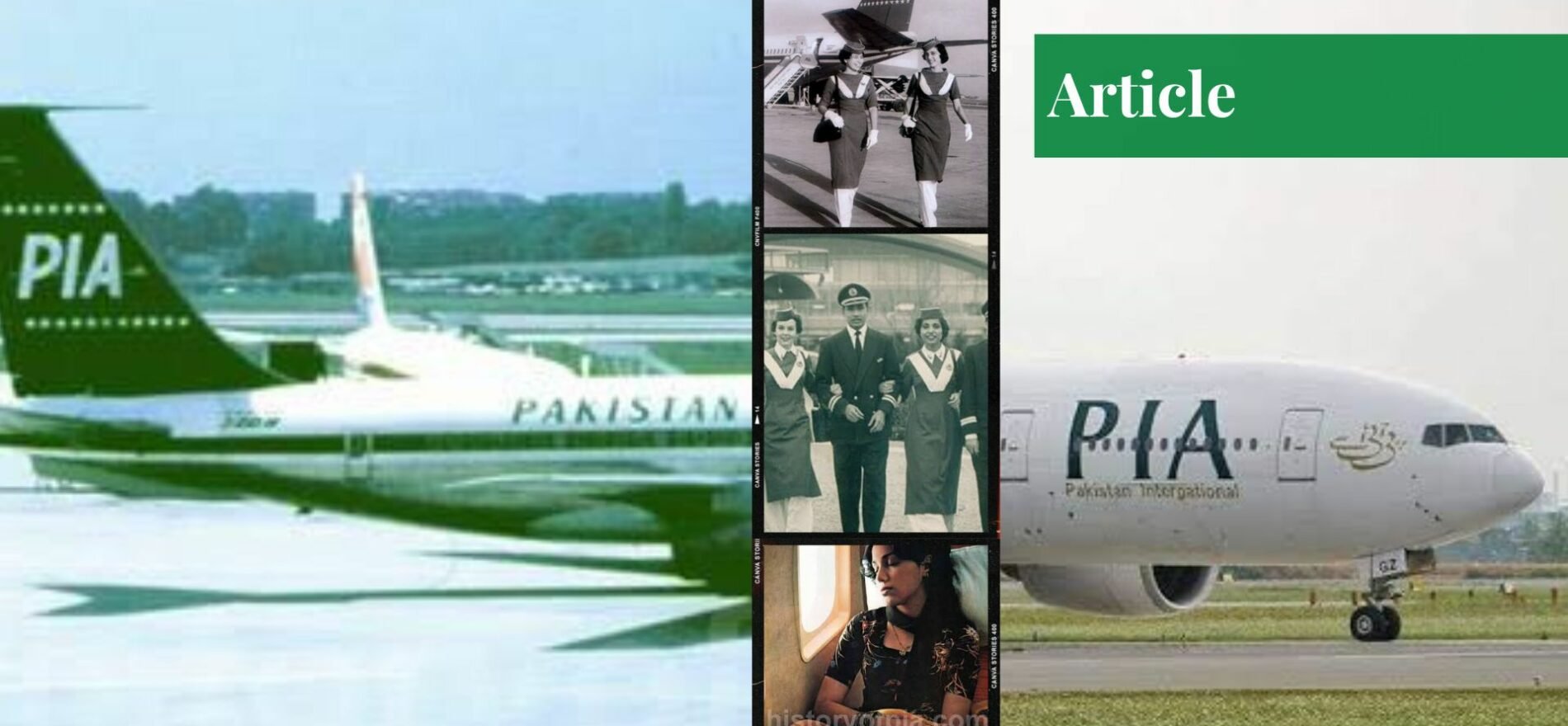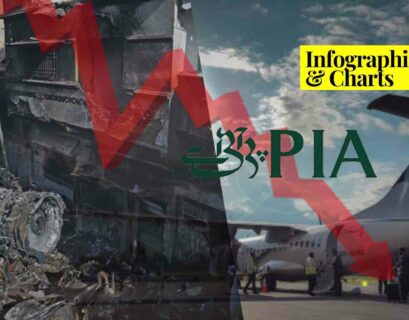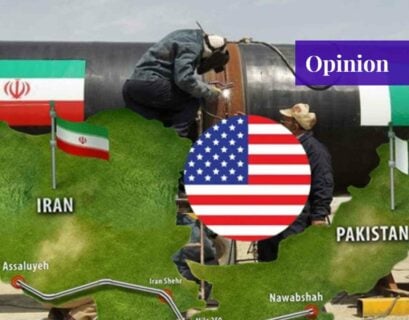Ms Fatimah Naeem is pursuing her Bachelor's in Peace and Conflict Studies from National Defence University Islamabad.
Introduction
During the last century, the aviation markets around the globe flourished in both commercial and military aspects. With the advent of huge apparatuses such as airplanes, travel became a convenient prospect for millions. Every nation-state in the contemporary arena now recognizes the need for aviation platforms. The same was observed with the emergence of Pakistan. Quaid-e-Azam Muhammad Ali Jinnah had emphasized the need for a separate aviation authority even before the conception of Pakistan. With talks of Pakistan coming into being, he demanded the leading industrialist, Mr. M.A. Ispahani, set up an airline. This airline, which later became known as the PIA (Pakistan International Airlines), would assist the people of upcoming Pakistan in covering the 11,000 miles of distance between East Pakistan and West Pakistan with swiftness and efficiency.
Orient Airways Takes Off
Registered as a pilot project in Calcutta, a new airline, namely “Orient Airways Ltd,” began its ascendancy on 23rd October 1946. With Mr. M.A. Ispahani as the newly appointed chairman and Air Vice Marshal O.K. Carter as the general manager, the new carrier’s base persisted in Calcutta. The efforts to obtain an operating license were successfully met in May 1947. Flight operations commenced shortly after the purchase of four new Douglas DC-3s, and within a couple of months, the creation of Pakistan led to the largest migration in the history of mankind.
With the already existing Orient Airways, the Government of Pakistan also took to chartering a BOAC aircraft to help with the relief operations of transporting people to and from the capital cities of Karachi and Delhi. Eventually, an aviation link was established between the two wings of Pakistan through a Karachi-Dacca route. With a rather small fleet comprising just two DC-3s, three crew members, and twelve mechanics, the airways smoothly commenced their scheduled operations. Initially, the planes were being chartered on three routes, but with the increasing demand for by-air transportation, several new apparatuses were acquired in late 1949. It had become evident by the early 1950s that the need for aviation catering across the subcontinent was dire.
Emergence of Pakistan International Airlines (PIA)
Being a privatized aviation industry, Orient Airways was lacking funds, capital, and resources. Upon the proposition of the Government of Pakistan, a state-owned airline had to be established. Orient Airways was then merged with national aviation, creating the infamous Pakistan International Airlines (PIA) on January 10, 1955. Besides carrying out the necessary transportation duties, Orient Airways had also established a gateway for the new Pakistan International Airlines in terms of infrastructure procurement.
The inauguration of the newly emerged PIA to the glitzy and glamorous international destination of London via Cairo and Rome was considered to be an impertinent episode by the public. This particular scheduled international service had brought negative attention from the masses, as it was observed to be an unnecessary and opulent prospect. There were numerous other thriving issues, such as refuge, poverty, and shelter, but the government stayed focused on upholding its international accessibility status. Fortunately, this scheme proved fruitful in the long run, as substantial amounts of foreign exchange were earned through internationalizing the airline service.
The Golden Years of Pakistan International Airlines (PIA)
Even though Mr. Ispahani was the first officially appointed chairman of the PIA, it was Mr. Zafar-ul-Ahsan who built the foundation for the airline’s successful future endeavors during his 4-year tenure. By strengthening the already existing infrastructure, he laid the foundation for operating an international airline service effectively. Later on, the appointment of Air Commodore Nur Khan as the new managing director further enhanced the services. Under the new director, within six years, the PIA launched its reputation sky-high in terms of being a commercial airline, setting a new standard across Asia. The new management shifted its focus toward the development, growth, and expansion of this enterprise.
In March 1960, a tremendous achievement in the shape of a PIA Boeing 707 was attained as it became the first airplane to launch a travel service from London to Karachi to Dacca. Gaining momentum during the entire decade of the 1960s was indeed a marvelous spectacle for spectators around the globe. Flying high and mighty towards a never-ending horizon of success, PIA quickly became a household name nationally as well as internationally. In 1962, PIA Air became the first airline to break the record for the fastest flight from London to Karachi with a time precision of 6 hours, 43 minutes, and 51 seconds. To this day, the record remains unbroken.
Another success story unraveled as the PIA became the first Asian airline belonging to a non-communist country to enter the airspace of the People’s Republic of China in April 1964. Moreover, it provided technical assistance to other airlines such as Philippines Air and Air Malta while also granting two of its carriers on lease to Emirates Airline in the ’70s and ’80s. Continuing up the growth curve with a constantly expanding fleet allowed PIA to become the epitome of success.
The Increasing Altitude of Challenges
As the years went by, the consistently changing government structure of the state had negative consequences for the airline as well. Weak aviation policies with inefficient administration led to a downfall in the reputation during the 1990s. Viewing this as an opportunity, many powerful industrialists took to setting up their own privatized commercial airlines with better flying standards and staff. These include Airblue, Shaheen Air, Serene Air, and the more recent FlyJinnah.
With low-cost tickets and better catering services, these private airlines witnessed a surge in passenger traffic and became strong competitors against the formerly world-renowned PIA. Unfortunately, PIA has kept high fares, with disorganized human and technological resources that could not meet its customers’ travel needs, ultimately impacting its credibility. Along with these factors, five air crash accidents – due to poor mechanical inspection – have also led the general public to lose confidence in PIA’s travel services.
Adding to this unfortunate frenzy, the poor law and order situation in Pakistan has also hampered foreign tourists from visiting the country, ultimately putting it on a pedestal with neighboring India, which has seen a significant rise in its tourism industry in recent years. Due to the inflationary pressure, Pakistan’s capital income has decreased significantly, which has been followed by an increase in the overall economic loss for the PIA.
Another surprising obstacle is the environmental aspect. For instance, flights to and from Iceland were stopped due to the requirement of a special technological engine needed to fly over the volcanic region. The same was observed with flights between the European regions, where the weather has been constantly transforming due to climate change. To cater to these emerging needs, many private national commercial airlines, such as Airblue, have already invested in buying carriers that fulfill the current technological needs and can handle intense international and domestic flights, as well as customer satisfaction. This has caused Pakistan International Airlines to be deemed an unreliable aviation brand that holds little to no relevance in the future.
Navigating New Efforts & Opportunities
A business strategy turnaround was introduced by the new managing team of PIA around 2019. With a five-year plan to fix the foundational governance, fair recruitment, and promotions according to merits, along with a long-term vision of growth, the efforts seemed promising to restore the lost chartered standard of the struggling airline. As part of immediate actions, around 1,000 fair promotions were awarded to employees while also taking special care of disciplinary concerns through more than 700 disciplinary actions.
By tethering the overall organizational performance pattern, accountability and conduct improved tremendously. Setting up multifunctional project teams through the HR department of PIA also proved fruitful in enhancing the work ethic collectively as well as individually. Appointing auditors to look after the finance issues was a massive step towards resolving related issues of transformation and management.
Catering to the five-year plan, the annual strategy during the second year revolved around amalgamating the new changes into the roots of the working organization, while the strategy of the third year focused on the growth and expansion prospects of the airline. In 2019, PIA began to recover financially, with passenger revenues up by 42.5%, a seven-fold increase in charter revenue, a passenger yield increase of 32% and cargo yield up by 19%, and a gross profit of Rs.7.8bn for the first time in 8 years.
Check on the Current Turbulence
Amidst the unstable economic and political circumstances of Pakistan, the national flag carrier has been subjected to a substantial amount of financial loss. According to reports by ARY News, 11 out of 31 carriers had been grounded due to a lack of technical support and funds between 2020 and 2023, which ultimately affected domestic flight earnings and profits. Pakistani citizens have outgrown their comfortable hopes of experiencing a smooth journey on PIA flights and have started opting for privatized airlines. Following the suspension of flights to and from the UK over the “fake pilot” scandal, the airline suffered a tremendous loss of Rs. 40–45 million per month, putting it on a pedestal against the “outsourcing” agenda of the interim government.
Is “Privatization” the Solution?
According to numerous industrial analysts, privatized airlines tend to make about 7% to 8% of their profit concerning their flight operations, which is scarce. Yet, interestingly, airline privatization remains the most competitive business industry around the globe. Partnerships through holding shares and investments in the tourism and hospitality sectors have yielded exceptional financial gains for privatized airlines.
The privatization of Air India can be seen as an example of success, as it has galvanized momentum to generate profit further and has benefited the company itself. In between combating inflation, public aggravation, and capital deprivation, the “privatization” scheme needs to be fashioned delicately in an articulated disposition to seek divorce against future losses for Pakistan International Airlines.
Conclusion
Wrapping up the article, it has become clear that during its early days, Pakistan stood at a great stature in terms of its airline services, particularly during the second half of the 20th century. Breaking records and garnering many “firsts” in the global aviation field, it was considered to be more of a “dream line” than an airline. However, unfortunate events struck one after another, affecting the country in its entirety and ultimately having adverse effects on Pakistan International Airlines (PIA). But hope is resurfacing as efforts to eradicate the negatively impacting factors have increased in the last couple of years.
If you want to submit your articles, research papers, and book reviews, please check the Submissions page.
The views and opinions expressed in this article/paper are the author’s own and do not necessarily reflect the editorial position of Paradigm Shift.



















